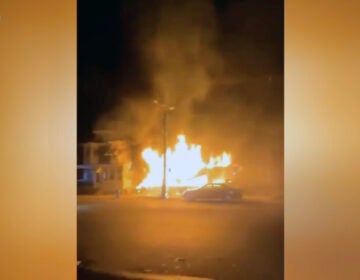How the chemical-spill meeting went off the rails
-
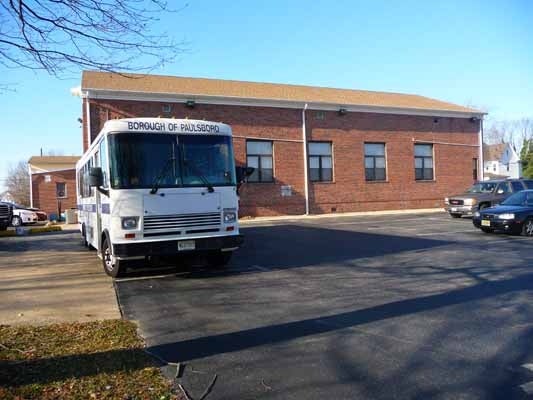
<p>Conrail is operating an evacuee assistance center in nearby Gibbstown, N.J. (Alan Tu/WHYY)</p>
-
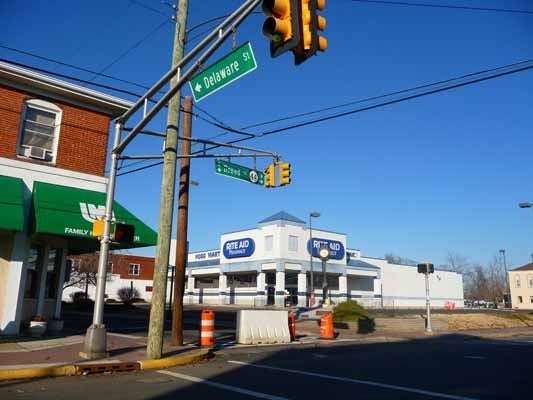
<p>This Rite Aid is inside the evacuation zone and was closed on Wednesday. (Alan Tu/WHYY)</p>
-
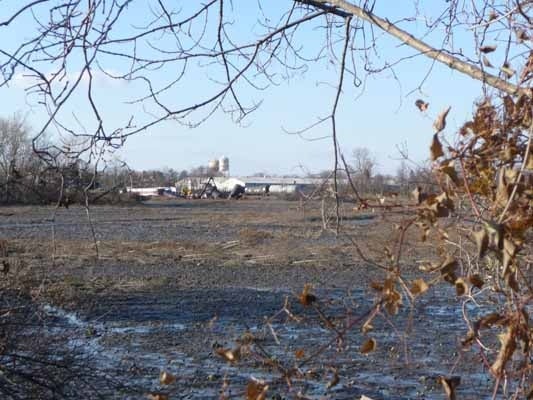
<p>The train accident can easily be seen from a nearby road outside of the evacuation zone in Paulsboro, N.J. (Alan Tu/WHYY)</p>
-
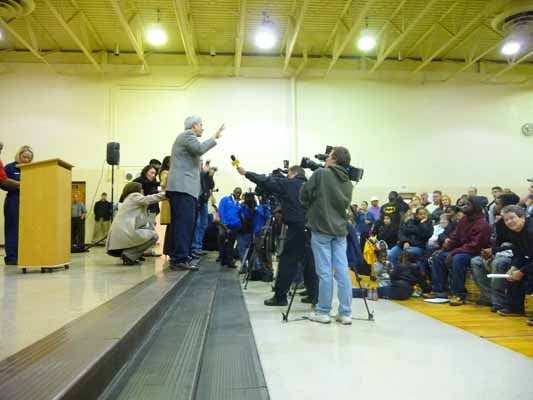
<p><span style="font-family: monospace; font-size: 14px;">Larry Ragonese with New Jersey DEP was forced to shout after his microphone failed. (Alan Tu/WHYY)</span></p>
-
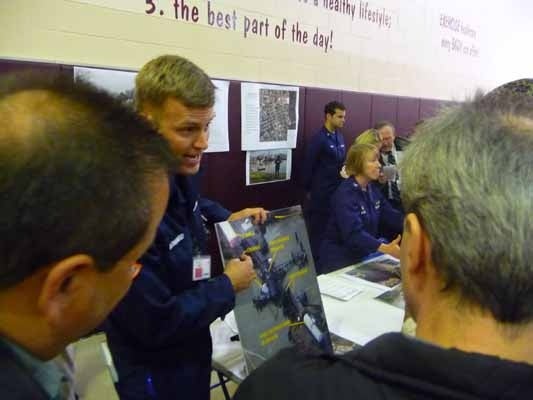
<p>U.S. Coast Guard officials said on Wednesday it had safely removed the remaining vinyl chloride from a punctured train car. (Alan Tu/WHYY)</p>
-
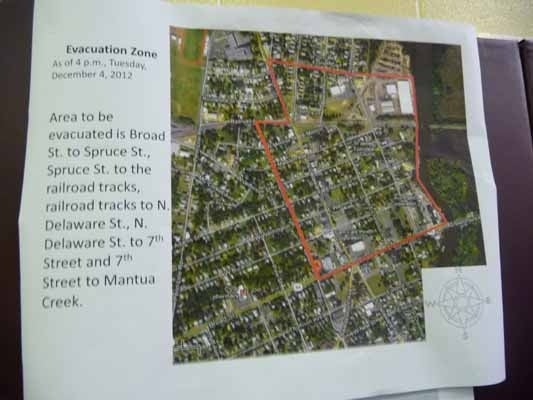
<p>More than 150 households are within the evacuation zone. (Alan Tu/WHYY)</p>
-
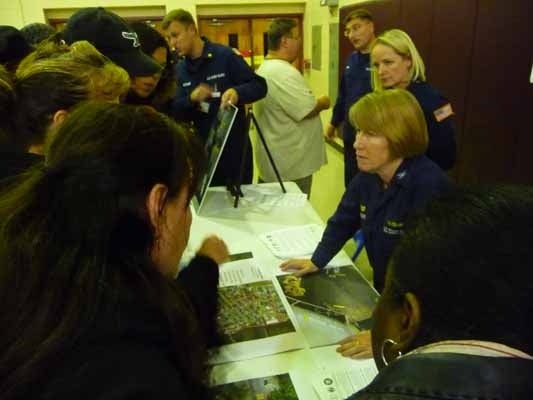
<p>U.S. Coast Guard officials (right) answer questions about the toxic clean up efforts at the train accident site. (Alan Tu/WHYY)</p>
-
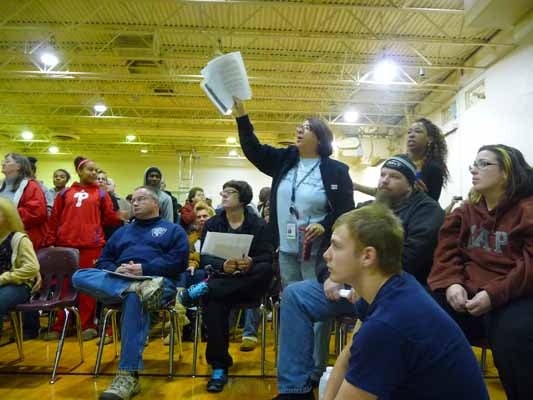
<p>This woman said she lives outside of the evacuation zone and wanted more assurances that the air is safe for her family. (Alan Tu/WHYY)</p>
-
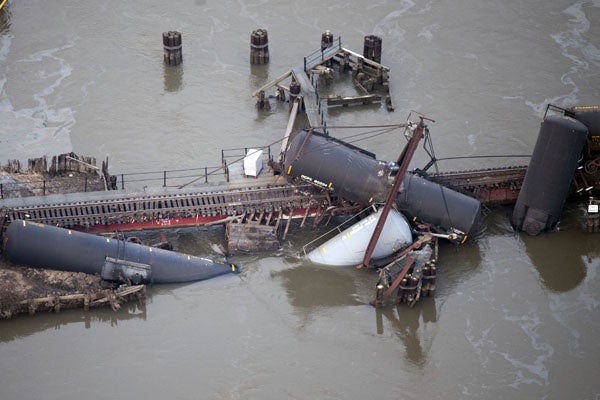
<p>This is how the accident looked the day it happened - Friday, Nov. 30, 2012. (AP Photo/Cliff Owen)</p>
A community meeting Wednesday night for Paulsboro residents affected by last week’s vinyl chloride leak quickly went downhill, digressing into a shout-fest.
Residents told NewsWorks that they came to the meeting because they want to know what’s going on since a train derailment one week ago that left one tanker car spewing a toxic cloud into the neighborhood. They complained that they’ve received little information, especially about the key issue: Is the air safe to breathe?
About 400 people crammed into a middle-school gymnasium in nearby Gibbstown. Unfortunately a faulty microphone turned presentations by a Coast Guard official and a New Jersey environmental spokesman into 30 minutes of half-sentences punctuated by residents’ groans and boos.
That’s when Paulsboro Mayor Jeffrey Hamilton, who appeared to finally get a working microphone, cut short the list of scheduled speakers and asked residents to go over to the information tables staffed by various agencies to ask their questions.
Angry residents shouted that they wanted their answers now (see video below), but after Borough officials left the stage area many people headed for the exit doors.
Shelyna Hamilton, who attends church in Paulsboro, said she understands people’s frustration. For Hamilton the people shouting for answers ended up making it impossible for the meeting to go on. “They (other residents who weren’t yelling) should be given a chance to speak and ask the questions so those who are in front of us can answer the question,” she said.
Many people who stayed did get the answers they wanted.
Martha Milligan asked how she could be alerted to emergencies. When the train accident occured last week, she said she didn’t get any alert of any kind.
“We never heard a siren, no police came and knocked on our door, nothing,” she said.
An automated call informing residents to “shelter in place” was sent to all Paulsboro residents who had a land line phone but for Milligan who uses only a cell phone she didn’t find out until after she arrived to work.
Milligan said Paulsboro Police Chief Chris Wachter told her about Gloucester County’s text message alert system.
“He was more educational than all of the radio stations, television stations,” Milligan said.
Vinyl chloride crash course
One of the top concerns expressed by residents last night was: For residents still in Paulsboro, is the air safe?
NewsWorks met up with New Jersey Department of Enviromental Protection spokesman Laurence Hajna to have him walk us through a crash course on airborne vinyl chloride.
“Vinyl chloride is a gas that is pressurized into liquid form so it can be shipped. When the tank car breached, the vinyl chloride shot out. That’s the source of the cloud at the crash site. Most of it came out as a gas, but there was still some liquid vinyl chloride left behind,” he said.
Why are toxic gas levels fluctuating?
Hajna said the vinyl chloride sometimes gets trapped by the weather.
“This chemical is heavier than air,” he said. “It would get trapped under temperature inversions — the colder air on top of the warmer air. So night time comes in, the vapor tries to rise, they hit this block of cold air, they fall. They waft into residential areas, albeit in low levels. So that’s why you were seeing increases and decreases and that led to some of the confusion,” Hajna said.
How are the evacuation borders determined?
“We look for patterns,” Hajna said. “The areas bounded by the evacuation zone are areas where we see more consistent and slightly higher elevated levels than in the rest of the towns.”
Will the vinyl chloride settle into the ground?
“No, it really wants to be a gas. It wants to be a vapor,” he said. “If there were any residual material, it would vaporize quickly, and you wouldn’t be seeing it in the long term,” he said.
Here are the latest developments, as reported on the Gloucester County derailment website:
Air monitoring continues with DEP, EPA and Conrail contractors.
One crane from Weeks Marine, Inc., is staged at the mouth of the Mantua Creek waiting to pick up debris and the tank cars.
The public assistance center, staffed by Conrail, is located at St. Michael’s Club, 406 Memorial Avenue, Gibbstown, N.J.
The existing evacuation order is expected to last at least until Sunday, Dec. 9.
680 individuals have been evacuated.
Currently, 204 hotel rooms are occupied by individuals evacuated from the affected area.
Dive teams conducted an assessment of the ethanol rail car and found no damage.
DEP-conducted water samples were completed in several areas of the affected area, and no levels of concern were detected.
The Coast Guard said it has safely removed all of the vinyl chloride left in one of the derailed train cars and hopes to have the tracks clear by Sunday, when it would then lift an evacuation order for nearly 150 homes.
WHYY is your source for fact-based, in-depth journalism and information. As a nonprofit organization, we rely on financial support from readers like you. Please give today.




